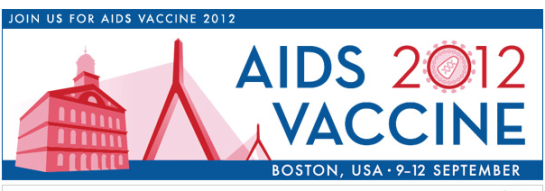The elusive quest for an AIDS vaccine
The elusive quest for an AIDS vaccine is the topic of a four-day conference hosted by the Global HIV Vaccine Enterprise that begins today in Boston. The annual conference comes at a very exciting time in the HIV prevention landscape, and makes the conversation all the more interesting.
 The development a vaccine, while progressing, remains in the very distant future, for reasons that only a real scientist can articulate. There are some exciting and game-changing tools such as microbicides and other forms of pre-exposure prophylaxis on the horizon with the potential to dramatically alter the shape of the epidemic and change the gendered power dynamics that fuel the epidemic.
The development a vaccine, while progressing, remains in the very distant future, for reasons that only a real scientist can articulate. There are some exciting and game-changing tools such as microbicides and other forms of pre-exposure prophylaxis on the horizon with the potential to dramatically alter the shape of the epidemic and change the gendered power dynamics that fuel the epidemic.
If you take a cold hard look at the statistics, the fact remains that despite enormous progress, for every person who is initiated onto lifesaving ART, two more people are infected with HIV. While countries like South Africa are making huge strides in bringing new people onto treatment, they still are struggling to keep pace with the rate of new infections and are missing a large portion of people in need of treatment. According to the World Health Statistics 2012 report, South Africa is reaching just 55% of people with advanced HIV infection with ART. This leads people to the conclusion that it will not be possible to treat our way out of the epidemic and makes the elusive quest for an AIDS vaccine all the more critical; until recently, many argued that a vaccine was the only tool that will ever “end AIDS”.
Myron Cohen threw a wrench into that line of reasoning this past year when he published findings from the HPTN052 study, which showed that treating people with HIV with ART reduces their sexual transmission of HIV by 96 percent. Is it possible, then, that we could treat our way out of the epidemic? Cohen’s findings lend additional weight to ongoing modeling studies examining how “test and treat”—immediately putting an HIV-infected individual on treatment, despite their eligibility (measured by CD4 count)—would alter the course of the epidemic. The reasoning? As more and more people are put on medication, the epidemic theoretically should fizzle out.
In a 2009 commentary in The Lancet, Geoffrey Garnett responded to the first notable modeling study that looked at the impact of test and treat on the epidemic. He addresses the multi-faceted questions related to treating our way out of the HIV pandemic: could we, would we, should we?:
When early treatment is considered as a prevention tool, success will require substantial resources and depend on a remarkable degree of acceptance and cooperation across populations. If we could eliminate HIV this way would we, given the will needed, and should we, given the conflict between utilitarianism and individualism inherent in this strategy?
Pilot programs are now emerging, including one in San Francisco, under the assumption that this approach works. NPR’s Shots Blog wrote a great feature piece examining some of the controversy surrounding the “test and treat” approach, including the possibility of drug resistance development and high associated costs.
Cohen’s findings do not obviate the need for a vaccine. Rather, they complicate (in a good way!) the puzzle of options available to policymakers, ministries of health, donors and other key stakeholders involved in the global AIDS response. The question remains, how do we balance the resources devoted to the elusive quest for a vaccine, when worldwide, people are still living with HIV, and in need of treatment. These questions must be answered, but who has the authority to answer them?
To stayed up-to-date on the latest happenings of the conference, check out their website, and use the conference hashtag, #AIDSVax2012 on Twitter.
